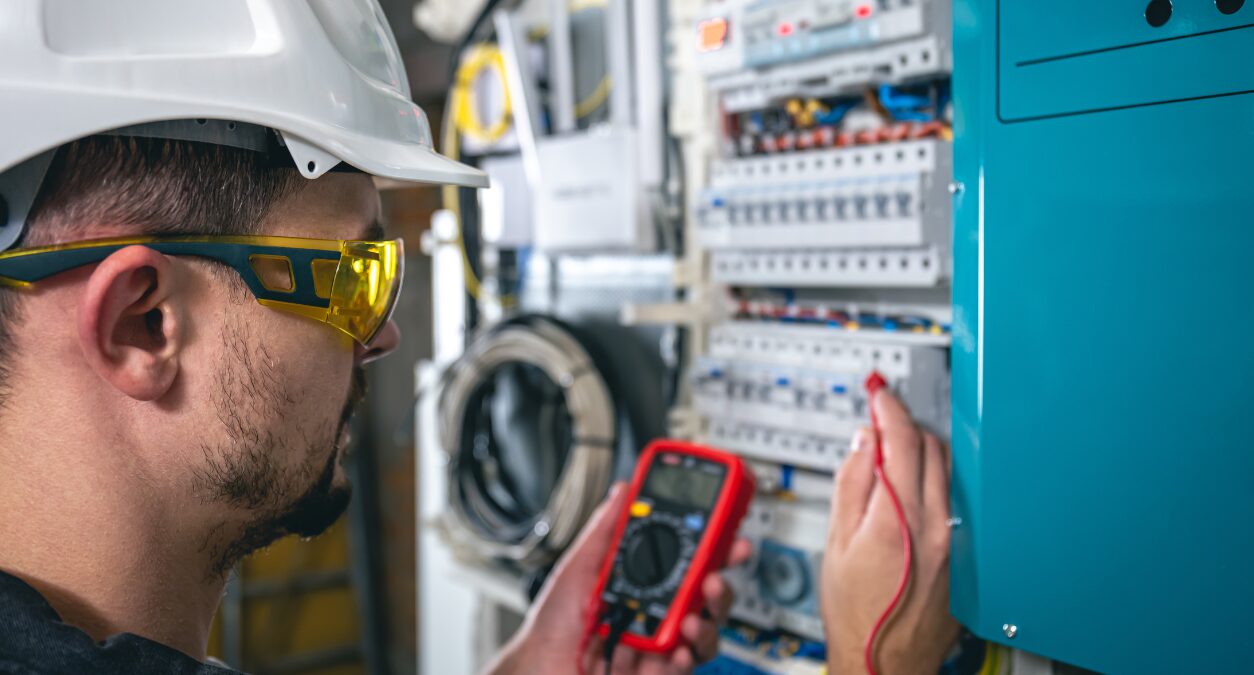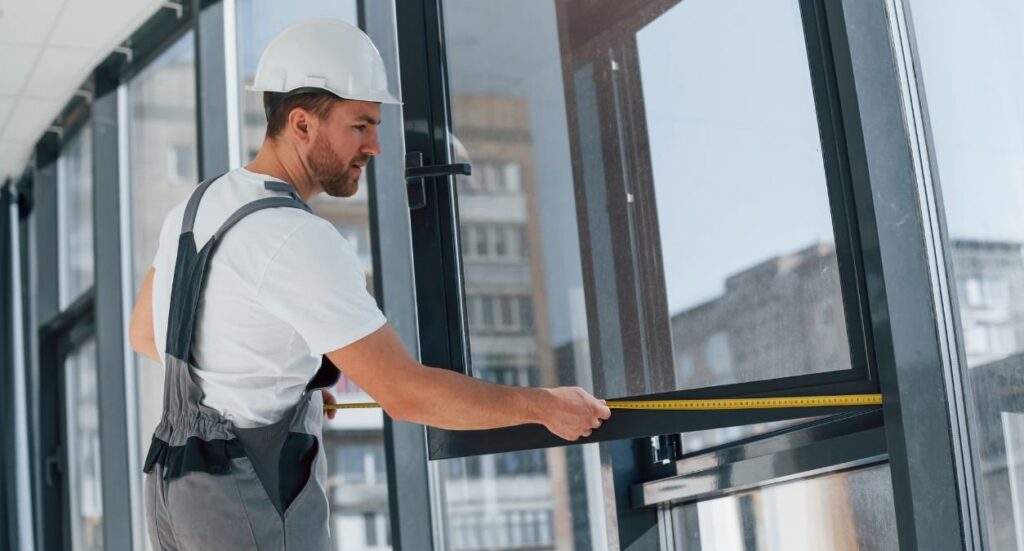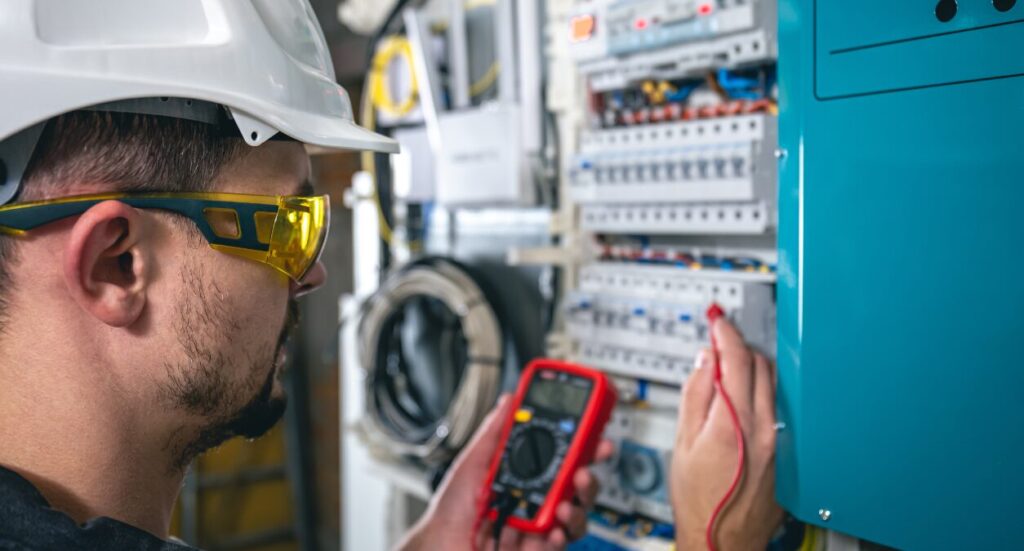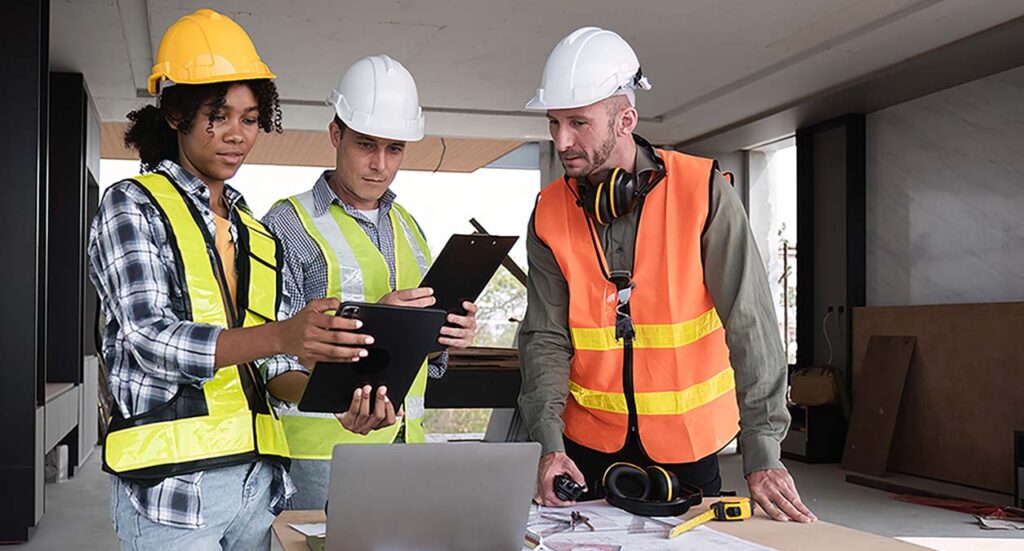Table of contents
Table of contents
An Electrical Installation Condition Report (EICR) is a key service electricians provide to assess the safety and integrity of a property’s electrical systems. It involves a thorough inspection and testing process designed to identify issues such as faulty wiring, deterioration, non-compliance with current regulations, or potential fire and shock risks.
As an electrician, understanding and offering an EICR test not only boosts your service offering but plays a critical role in public and workplace safety.
Are you wanting to know more about offering EICR’s? It could be a valuable service to expand your client base. We’ve provided an overview of who might need them, what they involve and parts of the process to be aware of to help weigh up, if it’s worth getting qualified.
Who needs an EICR certificate?
Understanding your market helps you position EICRs as a necessary service:
Landlords
Landlords are legally required to obtain an EICR at least every five years for rental properties. The Electrical Safety Standards in the Private Rented Sector (England) Regulations 2020 make it mandatory to provide a copy of the report to tenants and local authorities if requested. Houses in Multiple Occupation (HMOs) have even stricter requirements, ensuring that shared properties meet safety standards.
Homeowners
While homeowners are not legally required to have an EICR, it is highly recommended every ten years or when selling a property. Many mortgage lenders and solicitors request an EICR to confirm electrical safety before completing a house sale. If a property has undergone renovations or has outdated wiring, an EICR can help identify potential hazards.
Businesses and Commercial Property Owners
Under the Health and Safety at Work Act 1974, business owners must ensure that electrical installations are safe for employees and customers. EICRs play a key role in meeting this duty of care, with recommended inspection intervals varying based on the type of business and its electrical usage. Failure to maintain electrical safety can result in legal penalties and insurance issues.
Public and High-Risk Buildings
Buildings such as schools, hospitals, hotels, and leisure centres require regular EICRs due to the high number of occupants and potential risks. These buildings typically require inspections every one to five years, depending on the level of electrical demand and safety risks associated with their use.
Industrial Sites
Factories, warehouses, and other industrial premises require more frequent EICRs due to the high electrical loads and complexity of installations. The recommended interval for these properties is generally every three to five years, ensuring that any faults are identified before they pose significant hazards.
Construction and Temporary Installations
Electrical systems used on construction sites, temporary event venues, and similar locations must comply with BS 7671 regulations. These installations often require inspections every three months due to the changing nature of the environment and the risks involved.
What does an EICR involve?
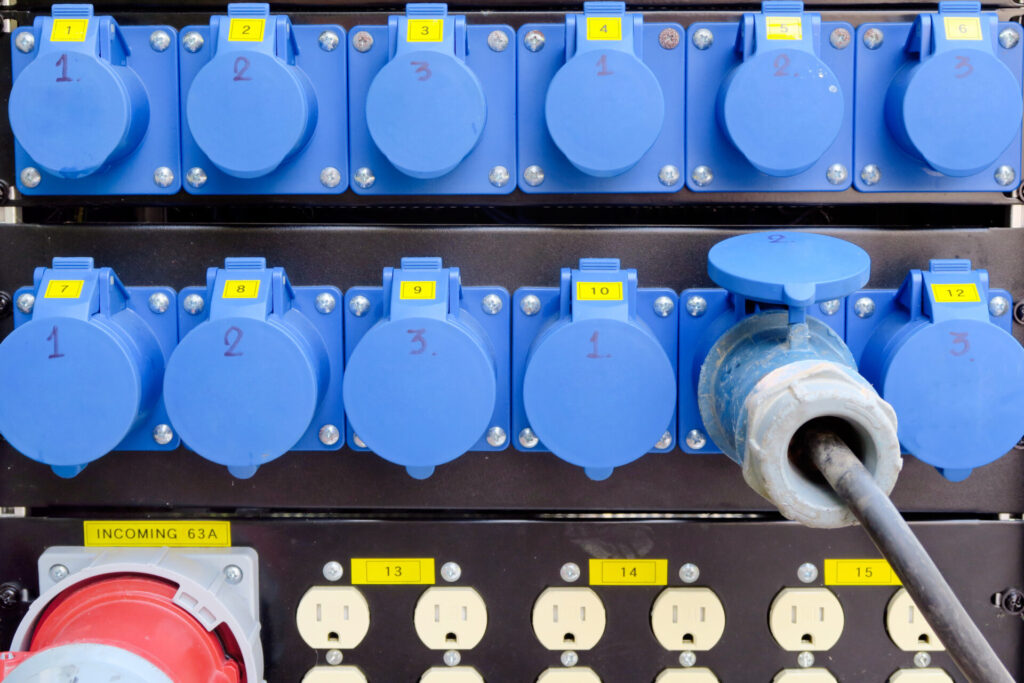
As the professional conducting the EICR, your responsibility is to inspect and test the property’s electrical installation, checking components such as:
- Distribution boards
- Wiring systems
- Sockets and switches
- Earthing and bonding
You’re looking for signs of wear, overloading, damage, or anything that doesn’t comply with BS 7671 (IET Wiring Regulations). Each issue you find is classified into one of the following codes:
- C1: Danger present – immediate action required
- C2: Potentially dangerous – urgent remedial work needed
- C3: Improvement recommended (not legally required)
- FI: Further investigation required
Serious faults (C1 or C2) should be clearly explained to the client, with recommendations for remedial work.
Why EICRs matter for your clients (and your business)
Whether you’re working with landlords, homeowners, commercial clients, or industrial sites, the demand for EICRs is growing steadily. This is driven not only by tightening legal requirements but also by a growing awareness around electrical safety and risk management.
For clients, an EICR is more than just a report—it’s a vital step in demonstrating due diligence, protecting occupants, and avoiding liability. For you, as an electrician, offering this service allows you to:
- Ensure compliance with UK legislation such as the Electrical Safety Standards in the Private Rented Sector (England) Regulations 2020 and the Health and Safety at Work Act 1974.
- Support clients in fulfilling their legal and insurance obligations, especially in rented or commercial environments where duty of care is non-negotiable.
- Help maintain high safety standards in properties that may have outdated or overloaded systems, particularly in older buildings or those with high energy demands.
- Provide peace of mind—landlords want safe tenants, businesses want protected assets, and homeowners want assurance their home isn’t hiding unseen hazards.
- Position yourself as a trusted expert, helping clients navigate regulations, understand risks, and make informed decisions about remedial work.
From a business standpoint, being qualified to deliver EICRs gives you a strong competitive edge. Clients are increasingly looking for electricians who can provide full inspection and testing services, not just installations and repairs. It also opens doors to repeat business—especially with landlords and commercial clients who require inspections on a regular cycle.
How to qualify to offer EICR certificates
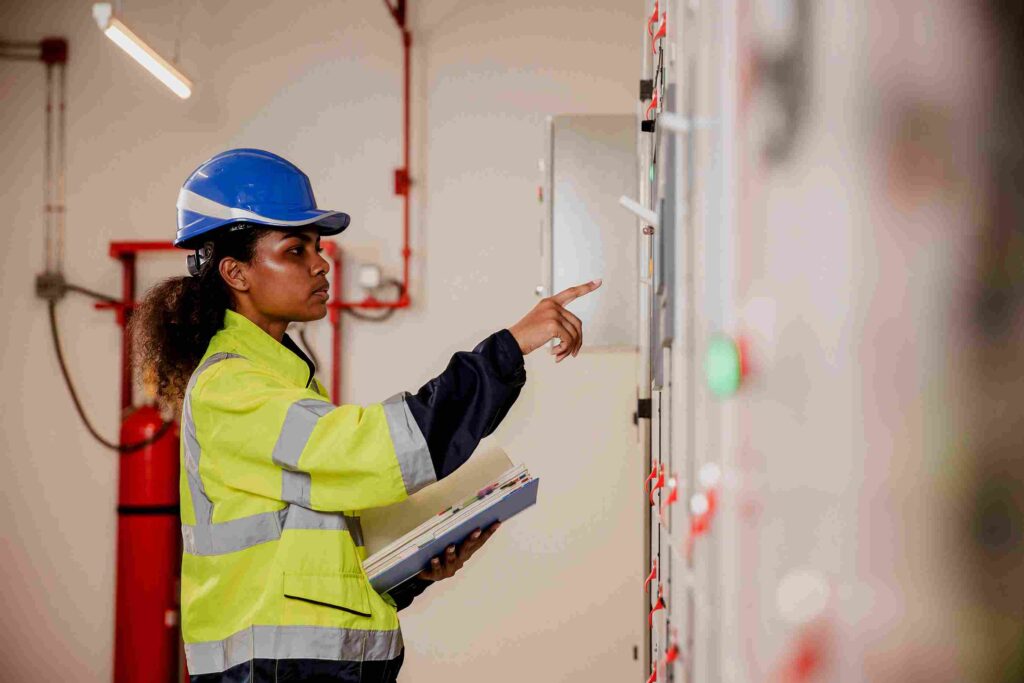
Only a qualified and registered electrician can conduct an EICR. To legally carry out EICRs, you must:
- Be a qualified electrician with experience in inspection and testing.
- Hold the Level 3 Award in Periodic Inspection & Testing (2391-51 or equivalent)
- Be registered with a recognised body such as:
- NICEIC
- NAPIT
- Elecsa
Certification from these schemes assures clients that you’re competent, up to date with regulations, and authorised to issue EICRs. If you’re not certified yet, consider enrolling in a 2391 course and applying for scheme membership—it’s a worthwhile investment to expand your services.
What happens after you complete an EICR?
Once an EICR is completed, you need to provide a report detailing any issues found. If no faults are detected, the installation is deemed safe. If problems are identified, remedial work must be carried out, particularly for C1 and C2 issues. Once repairs are made, a follow-up inspection may be required to confirm compliance. Landlords must provide copies of the EICR to tenants, and businesses must retain records for legal and insurance purposes.
- Deliver the EICR to the client clearly outlining any observations or defects.
- For C1/C2 issues, recommend immediate remedial action.
- If necessary, book a re-inspection after the remedial work is completed.
- Keep records of all reports for compliance, especially for business and landlord clients.
How to price EICRs
When working out your pricing you will need to consider the variations based on complexity, but here are general guidelines on the cost of EICR certificates:
- Domestic: £100–£300
- Rented properties: £150–£350
- Commercial/Industrial: £300+ (based on scale and layout)
Be transparent about costs and explain what’s included. Emphasise your accreditation and experience to justify quality over cut-price competition.
What is the difference between an electrical certificate and an EICR?
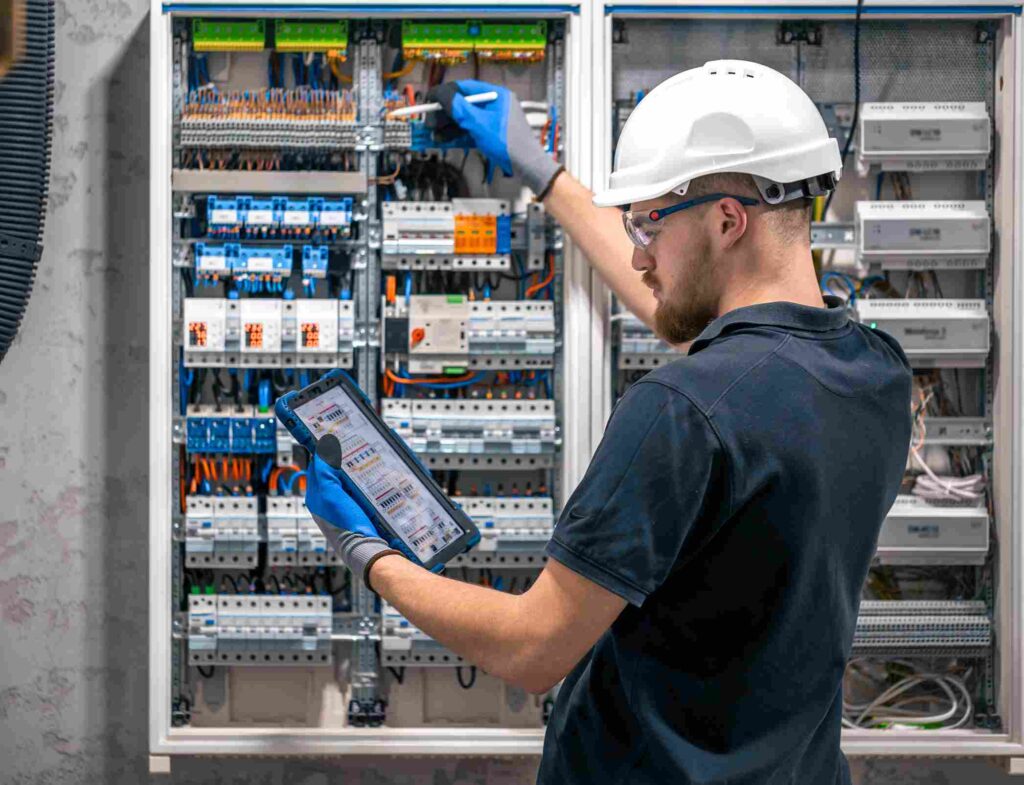
An Electrical Installation Certificate (EIC) is issued when a new electrical installation or major modification is completed. It confirms that the work meets UK wiring regulations. In contrast, an EICR is a periodic inspection of an existing electrical system, identifying wear and potential hazards. While both documents are essential for ensuring electrical safety, an EIC is for new work, whereas an EICR assesses the ongoing condition of an existing installation.
Make sure your clients understand the difference:
- EIC: Issued after a new installation or major modification.
- EICR: A periodic assessment of an existing system.
Both are important, but an EICR ensures ongoing safety and compliance of existing systems — a valuable recurring service opportunity for you.
Final Thoughts…
Offering EICRs is more than a box-ticking service, it’s a key part of protecting people, properties, and your clients’ reputations. By staying qualified, compliant, and thorough, you position yourself as a trusted electrical safety expert.
If you’re not currently qualified to offer EICRs, now is the time to upskill. Once certified, promote your EICR services confidently, because electrical safety starts with you.
Get Electricians’ Insurance from Protectivity
If you’re working on a self-employed basis or running your own electrician business where you’re employing other people, then having your own cover in place is a must. If something goes wrong, the financial implications can be severe, which is why having the correct tradesman insurance is essential.
At Protectivity, we specialise in providing electricians’ insurance to professionals just like you. Our policies include public liability up to £5 million as standard; you then have the option to add Employers’ Liability insurance, Contractor Works cover, Plant and Tools cover, financial loss and employee tools (only if you’ve included the other benefits). That way, when unforeseen circumstances occur, you can ensure you’re protected from unexpected costs. Our tools insurance, is ideal for electricians needing to protect their equipment.
Find out more about our affordable policies, excellent claims handling, and monthly payment options when you request a quote today.
Get Electricians’ Insurance from Protectivity
*Disclaimer – This blog has been created as general information and should not be taken as advice. Make sure you have the correct level of insurance for your requirements and always review policy documentation. Information is factually accurate at the time of publishing but may have become out of date.
Last updated by




